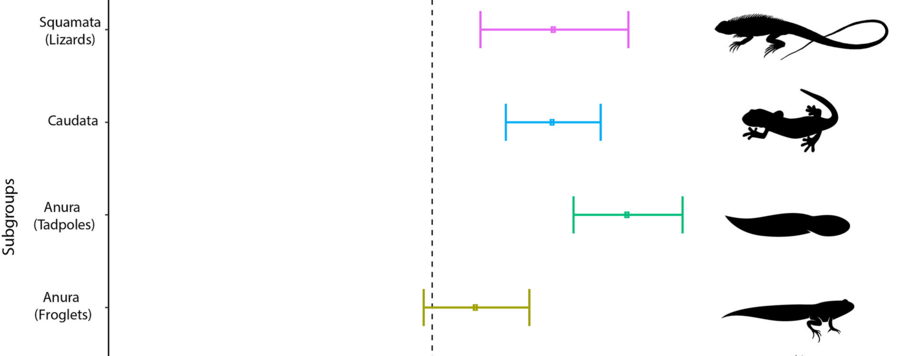
There and back again: A meta-analytical approach on the influence of acclimation and altitude in the upper thermal tolerance of amphibians and reptiles
Realistic predictions about the impacts of climate change on biodiversity requires gathering ecophysiological data and the critical thermal maxima (CTMax) is the most frequently used index to assess the thermal vulnerability of species. In the present study, we performed a systematic review to understand how acclimation and altitude affect CTMax estimates for amphibian and non-avian reptile species. We retrieved CTMax data for anurans, salamanders, lizards, snakes, and turtles/terrapins. Data allowed to perform a multilevel random effects meta-analysis to answer how acclimation temperature affect CTMax of Anura, Caudata, and Squamata and also meta-regressions to assess the influence of altitude on CTMax of frogs and lizards. Acclimation temperature influenced CTMax estimates of tadpoles, adult anurans, salamanders, and lizards, but not of froglets. In general, the increase in acclimation temperature led to higher CTMax values. Altitudinal bioclimatic gradient had an inverse effect for estimating the CTMax of lizards and anuran amphibians. For lizards, CTMax was positively influenced by the mean temperature of the wettest quarter. For anurans, the relationship is inverse; we recover a trend of decreasing CTMax when max temperature of warmestmonth and precipitation seasonality increase. There is an urgent need for studies to investigate the thermal tolerance of subsampled groups or even for which we do not have any information such as Gymnophiona, Serpentes, Amphisbaena, and Testudines. Broader phylogenetic coverage is mandatory for more accurate analyses of macroecological and evolutionary patterns for thermal tolerance indices as CTMax.






